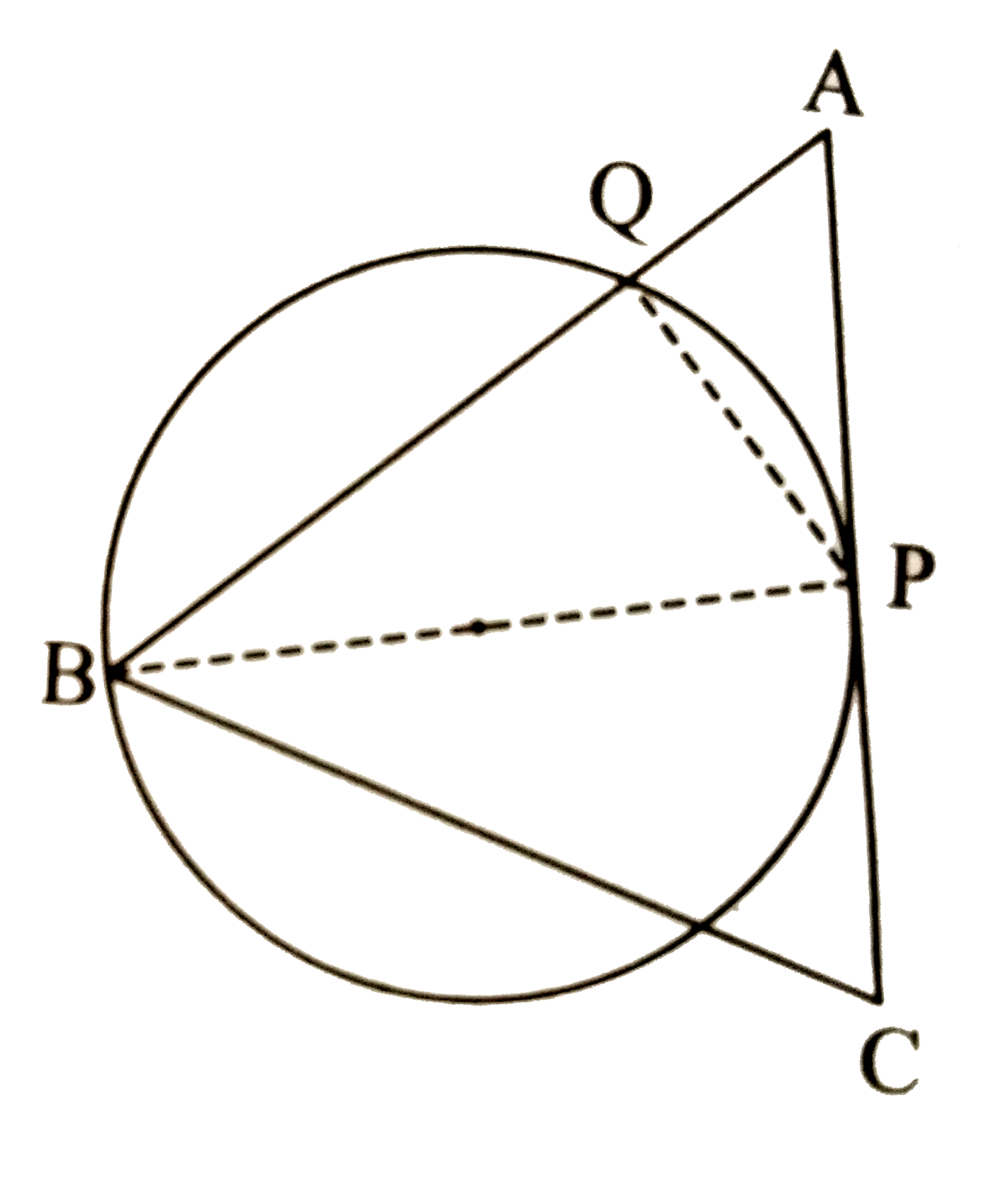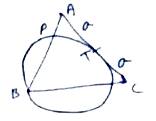ABC is an isosceles triangle with AB = AC. A circle through B touching AC at the middle point intersects AB at P. Then AP : AB is :
4:1
2:3
3:5
1:4
The correct Answer is:D
To solve the problem, we need to find the ratio AP:AB in the isosceles triangle ABC where AB=AC and a circle through point B touches line AC at its midpoint.
1. Identify the Triangle and Circle:
- Let AB=AC=a.
- Let M be the midpoint of AC.
- The circle passes through B and touches AC at point M.
2. Use the Power of a Point Theorem:
- According to the Power of a Point theorem, if a circle touches a line at a point, the power of the point (in this case, point A) with respect to the circle can be expressed as:
AP×AB=AM2
- Here, AM is the distance from point A to point M.
3. Calculate AM:
- Since M is the midpoint of AC, we have:
AM=AC2=a2
- Therefore, AM2=(a2)2=a24.
4. Substitute into the Power of a Point Equation:
- Now substituting AM2 into the equation gives:
AP×AB=a24
5. Express AP in terms of AB:
- Since AB=a, we can substitute AB into the equation:
AP×a=a24
- Dividing both sides by a (assuming a≠0):
AP=a4
6. Find the Ratio AP:AB:
- Now we can express the ratio AP:AB:
AP:AB=a4:a
- Simplifying this gives:
AP:AB=1:4
Final Answer:
Thus, the required ratio AP:AB is 1:4.
- Let AB=AC=a.
- Let M be the midpoint of AC.
- The circle passes through B and touches AC at point M.
- According to the Power of a Point theorem, if a circle touches a line at a point, the power of the point (in this case, point A) with respect to the circle can be expressed as:
AP×AB=AM2
- Here, AM is the distance from point A to point M.
- Since M is the midpoint of AC, we have:
AM=AC2=a2
- Therefore, AM2=(a2)2=a24.
- Now substituting AM2 into the equation gives:
AP×AB=a24
- Since AB=a, we can substitute AB into the equation:
AP×a=a24
- Dividing both sides by a (assuming a≠0):
AP=a4
- Now we can express the ratio AP:AB:
AP:AB=a4:a
- Simplifying this gives:
AP:AB=1:4
Thus, the required ratio AP:AB is 1:4.
Similar Questions
Knowledge Check
In the figure, ABC is a triangle in which AB=AC. A circle through B touches AC at D and intersects AB at P. If D is the mid - point of AC, Find the value of AB :
 A2APB3APC4APD4√2cm
A2APB3APC4APD4√2cmIf ABC is an isosceles triangle with ∠C=90∘ and AC=5 cm, then AB is:
A5 cmB10 cmC5√2cmD2.5 cmΔABC is an isosceles triangle with AB=AC, side BA is produced to D such that AB=AD. Prove that ∠BCD is a right angle.
A60∘B90∘C120∘Dcan't be determined
In ΔABC,AB=AC. A circle passing through B touches side AC at its midpoint P and intersects side AB at Q then prove BQ = 3AQ
Construction : Draw seg BP and seg PQ

View SolutionABC is an isosceles triangle with AB= AC. Draw AP⊥BC to show that ∠B=∠C.
View SolutionABC is an isosceles triangle in which AB = AC. Prove that the tangent to the circum-circle at A is parallel to BC.
View SolutionΔABC is an isosceles triangle with AB=AC, side BA is produced to D such that AB=AD. Prove that ∠BCD is a right angle.
View Solution
ABC is an isosceles triangle with AB = AC. If AD = AE then choose the correct alternatives.
View Solution


